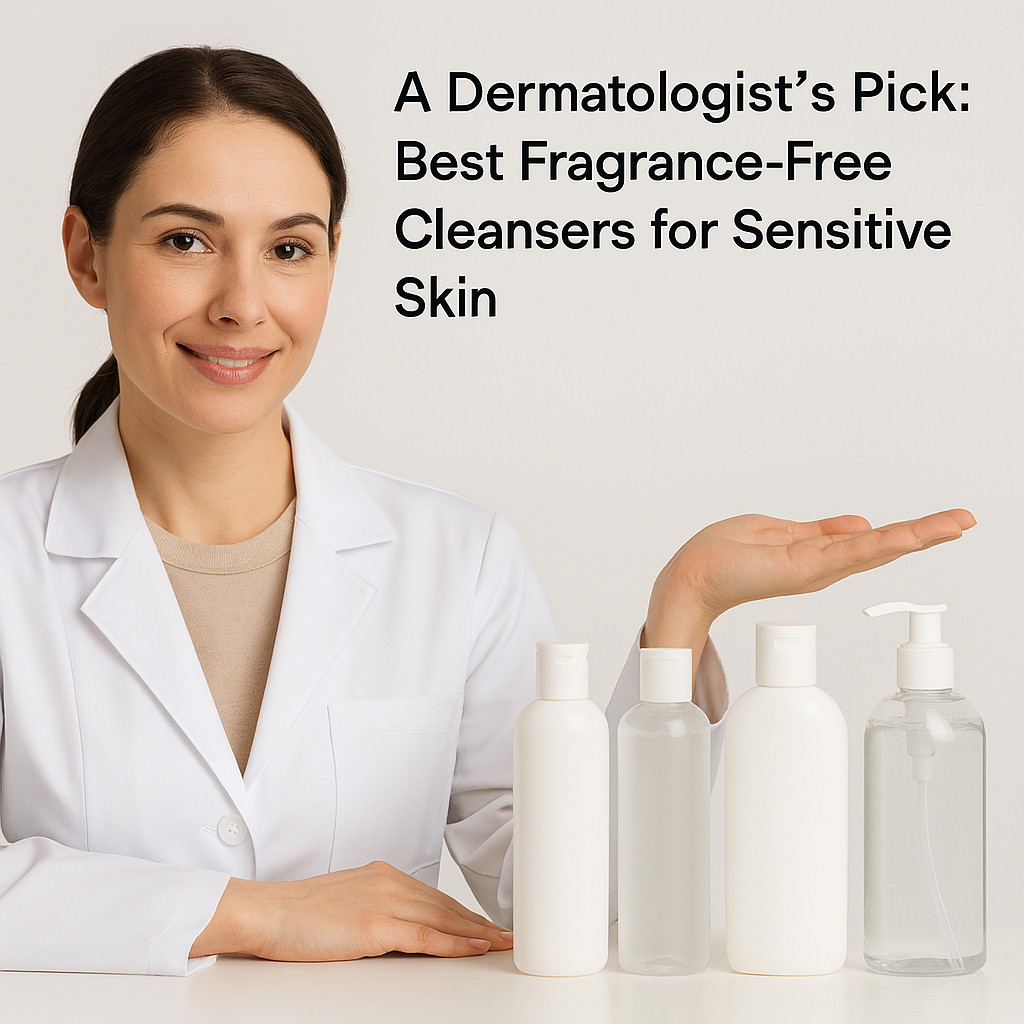Sensitive skin demands a gentle touch. Fragrance-free cleansers remove dirt, oil, and makeup without triggering redness, itching, or irritation. In this comprehensive guide, we’ll explore why fragrance-free matters, what to look for (and what to avoid), and share top dermatologist-recommended cleansers that soothe and protect delicate complexions.
Why Fragrance-Free Cleansers Matter
Many conventional cleansers rely on perfumes or essential oils to create a pleasant scent. Unfortunately, these additives can:
- Disrupt the skin’s natural moisture barrier
- Trigger allergic reactions and redness
- Intensify dryness and flakiness over time
By choosing fragrance-free formulas, you minimize potential irritants and give your skin the best chance to maintain balance and comfort.
Understanding Your Sensitive Skin
Before you shop, pinpoint your skin’s unique needs:
- Barrier Instability: Easily red, tight, or prone to peeling
- Reactivity: Reacts to temperature changes, wind, or pollution
- Underlying Conditions: Eczema, rosacea, allergic dermatitis
Keeping a simple skincare diary—tracking products, environmental factors, and reactions—will clarify which ingredients calm your complexion versus those that aggravate it.
What to Look for in a Fragrance-Free Cleanser
Choosing the right cleanser hinges on ingredient scrutiny:
Key Ingredients to Seek
- Ceramides to reinforce the skin barrier
- Hyaluronic acid or glycerin for gentle hydration
- Panthenol (pro-vitamin B5) to soothe inflammation
- Squalane for lightweight moisture preservation
Ingredients to Avoid
- Synthetic fragrances and parfum
- Alcohol denat or isopropyl alcohol
- Sulfates like SLS and SLES
- Harsh surfactants (e.g., sodium laureth sulfate)
Look for “fragrance-free” or “unscented” on the label—but also read the ingredient list to confirm the absence of masking agents.
Top Dermatologist-Recommended Fragrance-Free Cleansers
Below is a curated list of the best fragrance-free cleansers that dermatologists trust for sensitive skin. All are available in the United States and have earned high marks for gentleness and effectiveness.
| Cleanser | Key Benefits | Ideal For |
|---|---|---|
| CeraVe Hydrating Facial Cleanser | Contains ceramides, hyaluronic acid, non-foaming | Dry to normal sensitive skin |
| Vanicream Gentle Facial Cleanser | Minimal ingredients, non-comedogenic, N.E.A. seal | Extremely sensitive or eczema |
| La Roche-Posay Toleriane Hydrating Cleanser | Prebiotic thermal water, glycerin, soothing | All sensitive types |
| Cetaphil Gentle Skin Cleanser | Soap-free, non-foaming, rinses easily | Combination to oily sensitive |
| Clinique Liquid Facial Soap–Mild | Lightweight lather, dermatologist-tested | Normal to combination |
Use this table as a quick reference—or print it out for your next trip to the drugstore and you can also get them on sabadaon.com and get it delivered to your door step.
Integrating Your New Cleanser into a Sensitive Skin Routine
Gentle cleansing sets the stage for every product that follows. Here’s how to slot your fragrance-free cleanser into morning and evening rituals:
Morning Routine
- Splash lukewarm water on the face.
- Massage cleanser in gentle circles for 30–60 seconds.
- Rinse thoroughly and pat skin dry.
- Follow with hydrating serum and SPF 30+ mineral sunscreen.
Evening Routine
- Double cleanse only if you wear makeup (oil-based first, then the fragrance-free cleanser).
- Tone with a calming, alcohol-free mist.
- Apply barrier-repair moisturizer.
- Finish with a soothing night cream or facial oil.
Consistency and gentle technique help prevent over-stripping and maintain the integrity of your barrier.
Common Cleansing Mistakes to Avoid
Even the gentlest formula can backfire if used incorrectly. Watch for:
- Over-cleansing (more than twice daily)
- Using hot water, which can exacerbate dryness
- Rubbing vigorously instead of patting or sweeping
- Skipping patch tests on new products
Small tweaks—like lukewarm water and soft microfiber cloths—make a big difference in preventing irritation.
How to Patch Test New Products
A 24-hour patch test can save you from full-face flare-ups:
- Apply a pea-sized amount behind the ear or on the inner forearm.
- Cover with a bandage and leave for 24 hours.
- Remove and observe for redness, swelling, or itching.
No reaction? You’re clear to introduce the cleanser to your face.
Related Topics to Expand Your Expertise
- Best Soothing Ingredients for Barrier Repair
- How to Layer Serums and Moisturizers for Sensitive Skin
- Top Mineral Sunscreens for Reactive Complexions
- DIY Fragrance-Free Hydrating Face Masks
- Managing Rosacea and Redness: A Holistic Approach
- The Role of pH in Skincare for Sensitive Types
- Seasonal Skincare Swaps: Winter vs. Summer for Sensitive Skin
Choosing a fragrance-free cleanser is the foundational step toward calm, resilient skin. By focusing on skin-friendly ingredients, eliminating irritants, and integrating your new cleanser wisely, you’ll enjoy a complexion that feels as good as it looks. Bookmark this guide, share it with friends, and let us know in the comments which cleanser became your go-to for sensitive-skin relief.
